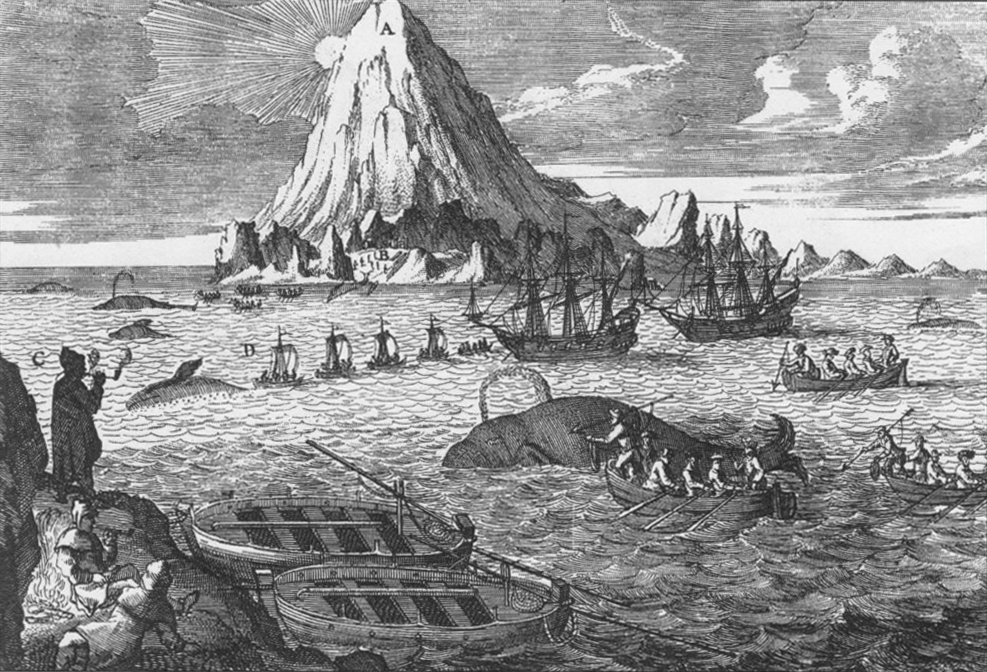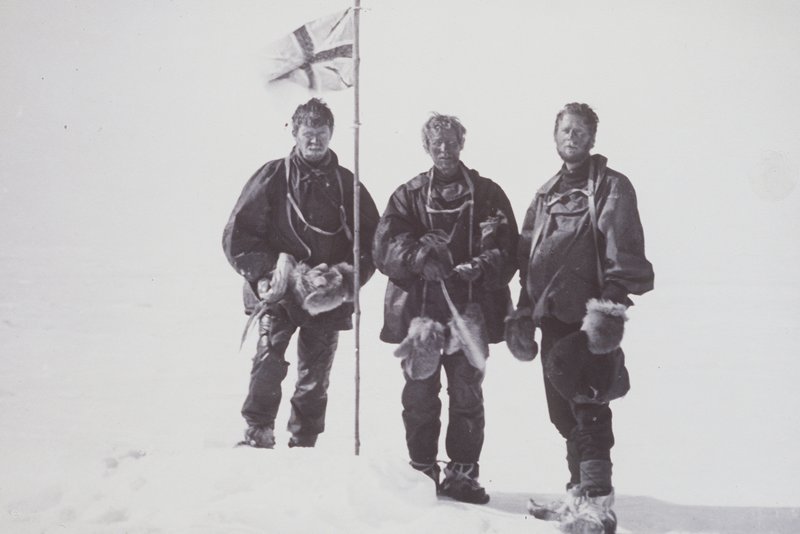|
Bjerkø Peninsula
Bjerkø Peninsula is a broad ice-covered peninsula of Antarctica, forming the west shore of MacKenzie Bay. Norwegian whalers explored this area in January and February 1931, naming the cape at the end of this peninsula for gunner Reidar Bjerkø of the whale catcher ''Bouvet II'', from whose deck the coast was sketched on January 19. Since Sir Douglas Mawson Sir Douglas Mawson (5 May 1882 – 14 October 1958) was a British-born Australian geologist, Antarctic explorer, and academic. Along with Roald Amundsen, Robert Falcon Scott, and Sir Ernest Shackleton, he was a key expedition leader during ... probably saw this cape from a great distance as early as December 26, 1929, the Australian name of Cape Darnley has been retained for the cape, while the Norwegian name has been applied to the peninsula. References * Peninsulas of Antarctica Landforms of Mac. Robertson Land {{MacRobertsonLand-geo-stub ... [...More Info...] [...Related Items...] OR: [Wikipedia] [Google] [Baidu] |
Peninsula
A peninsula is a landform that extends from a mainland and is only connected to land on one side. Peninsulas exist on each continent. The largest peninsula in the world is the Arabian Peninsula. Etymology The word ''peninsula'' derives , . The word entered English in the 16th century. Definitions A peninsula is generally defined as a piece of land surrounded on most sides by water. A peninsula may be bordered by more than one body of water, and the body of water does not have to be an ocean or a sea. A piece of land on a very tight river bend or one between two rivers is sometimes said to form a peninsula, for example in the New Barbadoes Neck in New Jersey, United States. A peninsula may be connected to the mainland via an isthmus, for example, in the Isthmus of Corinth which connects to the Peloponnese peninsula. Formation and types Peninsulas can be formed from continental drift, glacial erosion, meltwater, glacial meltwater, glacial deposition (geology), deposition, ... [...More Info...] [...Related Items...] OR: [Wikipedia] [Google] [Baidu] |
Antarctica
Antarctica () is Earth's southernmost and least-populated continent. Situated almost entirely south of the Antarctic Circle and surrounded by the Southern Ocean (also known as the Antarctic Ocean), it contains the geographic South Pole. Antarctica is the fifth-largest continent, being about 40% larger than Europe, and has an area of . Most of Antarctica is covered by the Antarctic ice sheet, with an average thickness of . Antarctica is, on average, the coldest, driest, and windiest of the continents, and it has the highest average elevation. It is mainly a polar desert, with annual Climate of Antarctica#Precipitation, precipitation of over along the coast and far less inland. About 70% of the world's freshwater reserves are frozen in Antarctica, which, if melted, would raise global sea levels by almost . Antarctica holds the record for the Lowest temperature recorded on Earth, lowest measured temperature on Earth, . The coastal regions can reach temperatures over in the ... [...More Info...] [...Related Items...] OR: [Wikipedia] [Google] [Baidu] |
MacKenzie Bay
MacKenzie Bay is a relatively small embayment of the western extremity of the Amery Ice Shelf, Antarctica, about northeast of Foley Promontory. On 10 February 1931 the British Australian New Zealand Antarctic Research Expedition (BANZARE) sighted a much larger embayment here and made an airplane flight to sketch its limits. They named it "MacKenzie Sea" after Captain K.N. MacKenzie, the master of the expedition's ship ''Discovery'' in 1930–31. Breakout of a large part of Amery Ice Shelf has drastically reduced the size of this feature; in 1968 the bay was wide. Several Norwegian whaling ship A whaler or whaling ship is a specialized vessel, designed or adapted for whaling: the catching or processing of whales. Terminology The term ''whaler'' is mostly historic. A handful of nations continue with industrial whaling, and one, Jap ...s sighted the original embayment nearly simultaneously with BANZARE; the whale-catcher ''Seksern'' (Captain Brunvoll) reached this area ... [...More Info...] [...Related Items...] OR: [Wikipedia] [Google] [Baidu] |
Norway
Norway, officially the Kingdom of Norway, is a Nordic countries, Nordic country located on the Scandinavian Peninsula in Northern Europe. The remote Arctic island of Jan Mayen and the archipelago of Svalbard also form part of the Kingdom of Norway. Bouvet Island, located in the Subantarctic, is a Dependencies of Norway, dependency, and not a part of the Kingdom; Norway also Territorial claims in Antarctica, claims the Antarctic territories of Peter I Island and Queen Maud Land. Norway has a population of 5.6 million. Its capital and largest city is Oslo. The country has a total area of . The country shares a long eastern border with Sweden, and is bordered by Finland and Russia to the northeast. Norway has an extensive coastline facing the Skagerrak strait, the North Atlantic Ocean, and the Barents Sea. The unified kingdom of Norway was established in 872 as a merger of Petty kingdoms of Norway, petty kingdoms and has existed continuously for years. From 1537 to 1814, Norway ... [...More Info...] [...Related Items...] OR: [Wikipedia] [Google] [Baidu] |
Whaling
Whaling is the hunting of whales for their products such as meat and blubber, which can be turned into a type of oil that was important in the Industrial Revolution. Whaling was practiced as an organized industry as early as 875 AD. By the 16th century, it had become the principal industry in the Basque coastal regions of Spain and France. The whaling industry spread throughout the world and became very profitable in terms of trade and resources. Some regions of the world's oceans, along the animals' migration routes, had a particularly dense whale population and became targets for large concentrations of whaling ships, and the industry continued to grow well into the 20th century. The depletion of some whale species to near extinction led to the banning of whaling in many countries by 1969 and to an international cessation of whaling as an industry in the late 1980s. Archaeological evidence suggests the earliest known forms of whaling date to at least 3000 BC, practiced by the ... [...More Info...] [...Related Items...] OR: [Wikipedia] [Google] [Baidu] |
Reidar Bjerkø
Reidar is a Scandinavian male given name of Old Norse origins. As of 2013, there are 6,850 people with this name in Norway, 1,519 in Sweden and 108 in Finland. In Estonia there are 5 Reidars and in Italy there's only one. The namesday is July 28 in Norway and May 9 in Sweden. The name Reidar, "hreidr" + "arr" means ''home'' and ''warrior''. Notable people * Reidar Alveberg (1916–2004), Norwegian bobsledder * Reidar Andersen, Norwegian ski jumper * Reidar Åsgård, Norwegian politician * Reidar Aulie, Norwegian artist * Reidar Berg, Norwegian bobsledder * Reidar Børjeson, Norwegian figure skater * Reidar Carlsen, Norwegian politician * Reidar Eide, Norwegian motorcyclist * Reidar Finsrud, Norwegian artist * Reidar Hirsti, Norwegian editor and politician * Reidar Hjermstad, Norwegian cross country skier * Reidar Holter, Norwegian rower * Reidar Horghagen, Norwegian drummer, also known as Horgh * Reidar Johansen, Norwegian politician * Reidar Jørgensen, Norwegian runner and bot ... [...More Info...] [...Related Items...] OR: [Wikipedia] [Google] [Baidu] |
Whale Catcher
A whaler or whaling ship is a specialized vessel, designed or adapted for whaling: the catching or processing of whales. Terminology The term ''whaler'' is mostly historic. A handful of nations continue with industrial whaling, and one, Japan, still dedicates a single factory ship for the industry. The vessels used by aboriginal whaling communities are much smaller and are used for various purposes over the course of the year. The ''whale catcher'' was developed during the Steam-powered vesselage , and then driven by diesel engines throughout much of the twentieth century. It was designed with a harpoon gun mounted at its bow and was fast enough to chase and catch rorquals such as the fin whale. At first, whale catchers either brought the whales they killed to a whaling station, a settlement ashore where the carcasses could be processed, or to its factory ship anchored in a sheltered bay or inlet. With the later development of the slipway at the ship's stern, whale catchers ... [...More Info...] [...Related Items...] OR: [Wikipedia] [Google] [Baidu] |
Douglas Mawson
Sir Douglas Mawson (5 May 1882 – 14 October 1958) was a British-born Australian geologist, Antarctic explorer, and academic. Along with Roald Amundsen, Robert Falcon Scott, and Sir Ernest Shackleton, he was a key expedition leader during the Heroic Age of Antarctic Exploration. Mawson was born in England and was brought to Australia as an infant. He completed degrees in mining engineering and geology at the University of Sydney. In 1905 he was made a lecturer in petrology and mineralogy at the University of Adelaide. Mawson's first experience in the Antarctic came as a member of Shackleton's Nimrod Expedition, ''Nimrod'' Expedition (1907–1909), alongside his mentor Edgeworth David. They were part of the expedition's northern party, which became the first to attain the South magnetic pole and to climb Mount Erebus. After his participation in Shackleton's expedition, Mawson became the principal instigator of the Australasian Antarctic Expedition (1911–1914). The expedit ... [...More Info...] [...Related Items...] OR: [Wikipedia] [Google] [Baidu] |
Cape Darnley (Mac
Darnley may refer to: People * Henry Stuart, Lord Darnley, consort of Mary, Queen of Scots * Earl of Darnley, peerage title Places * Darnley, part of Glasgow, Scotland * Darnley Island (Queensland), Queensland, Australia * Two places in Antarctica ** Cape Darnley (Mac. Robertson Land) ** Cape Darnley (South Georgia) * Two places in Canada ** Darnley, Prince Edward Island ** Darnley Bay, Northwest Territories Fiction * Darnley, a fictional city in Philip George Chadwick's '' The Death Guard'' * Darnley Mills, a fictional town in books by Philip Turner * ''Darnley, or, The Field of the Cloth of Gold'', an 1830 novel by George Payne Rainsford James See also * Darnley Lime Works Tramway and Mineral Railway * Dams to Darnley Country Park Dams to Darnley Country Park is a 1,350 acre country park in the East Renfrewshire and Glasgow areas, in Scotland. The park comprises the historic greenspace between the towns of Barrhead and Newton Mearns in East Renfrewshire, and the areas of ... [...More Info...] [...Related Items...] OR: [Wikipedia] [Google] [Baidu] |
Peninsulas Of Antarctica
A peninsula is a landform that extends from a mainland and is only connected to land on one side. Peninsulas exist on each continent. The largest peninsula in the world is the Arabian Peninsula. Etymology The word ''peninsula'' derives , . The word entered English in the 16th century. Definitions A peninsula is generally defined as a piece of land surrounded on most sides by water. A peninsula may be bordered by more than one body of water, and the body of water does not have to be an ocean or a sea. A piece of land on a very tight river bend or one between two rivers is sometimes said to form a peninsula, for example in the New Barbadoes Neck in New Jersey, United States. A peninsula may be connected to the mainland via an isthmus, for example, in the Isthmus of Corinth which connects to the Peloponnese peninsula. Formation and types Peninsulas can be formed from continental drift, glacial erosion, glacial meltwater, glacial deposition, marine sediment, marine transg ... [...More Info...] [...Related Items...] OR: [Wikipedia] [Google] [Baidu] |





